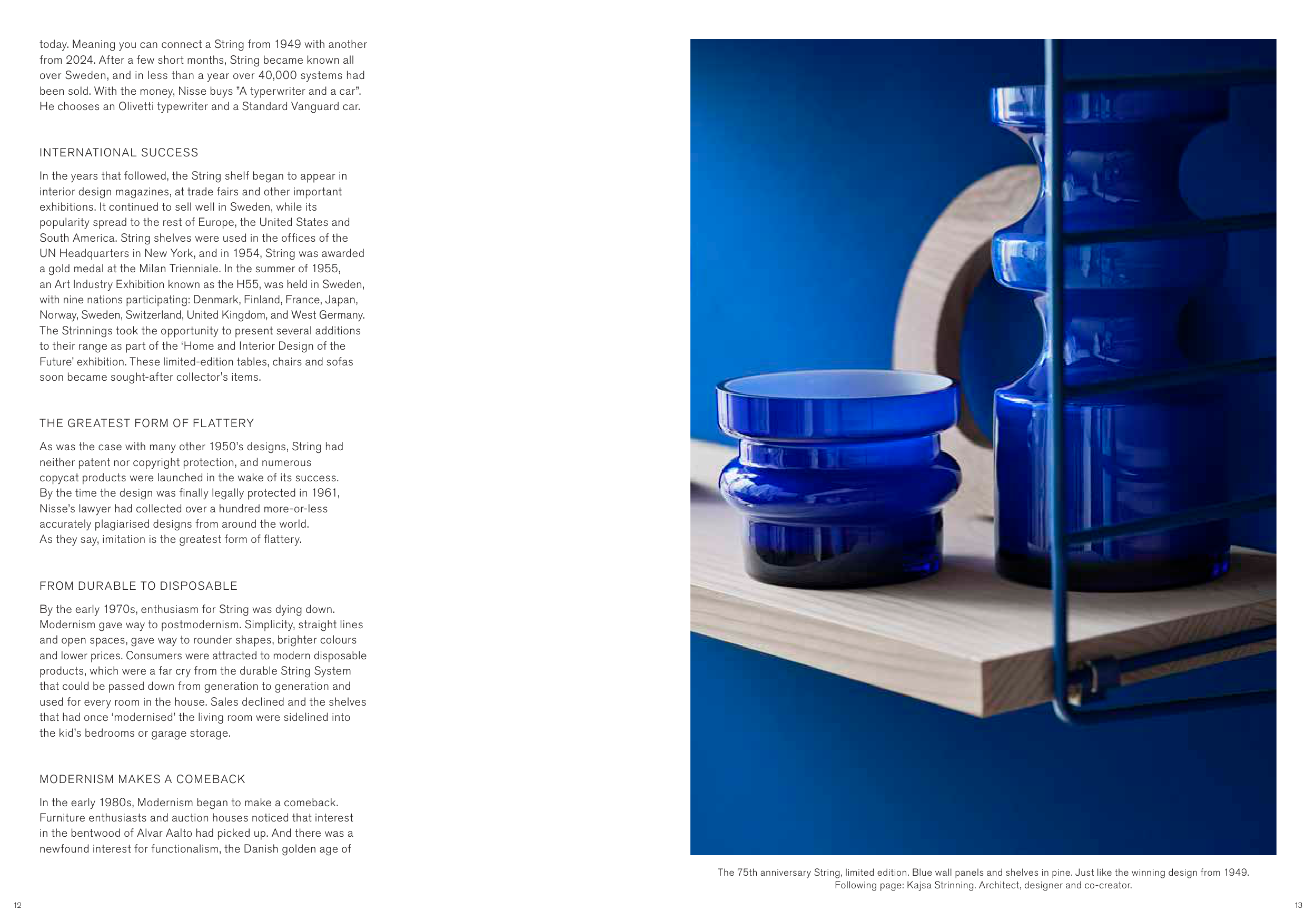12
13
today. Meaning you can connect a String from 1949 with another
from 2024. After a few short months, String became known all
over Sweden, and in less than a year over 40,000 systems had
been sold. With the money, Nisse buys ”A typerwriter and a car”.
He chooses an Olivetti typewriter and a Standard Vanguard car.
INTERNATIONAL SUCCESS
In the years that followed, the String shelf began to appear in
interior design magazines, at trade fairs and other important
exhibitions. It continued to sell well in Sweden, while its
popularity spread to the rest of Europe, the United States and
South America. String shelves were used in the offices of the
UN Headquarters in New York, and in 1954, String was awarded
a gold medal at the Milan Trienniale. In the summer of 1955,
an Art Industry Exhibition known as the H55, was held in Sweden,
with nine nations participating: Denmark, Finland, France, Japan,
Norway, Sweden, Switzerland, United Kingdom, and West Germany.
The Strinnings took the opportunity to present several additions
to their range as part of the ‘Home and Interior Design of the
Future’ exhibition. These limited-edition tables, chairs and sofas
soon became sought-after collector's items.
THE GREATEST FORM OF FLATTERY
As was the case with many other 1950’s designs, String had
neither patent nor copyright protection, and numerous
copycat products were launched in the wake of its success.
By the time the design was finally legally protected in 1961,
Nisse’s lawyer had collected over a hundred more-or-less
accurately plagiarised designs from around the world.
As they say, imitation is the greatest form of flattery.
FROM DURABLE TO DISPOSABLE
By the early 1970s, enthusiasm for String was dying down.
Modernism gave way to postmodernism. Simplicity, straight lines
and open spaces, gave way to rounder shapes, brighter colours
and lower prices. Consumers were attracted to modern disposable
products, which were a far cry from the durable String System
that could be passed down from generation to generation and
used for every room in the house. Sales declined and the shelves
that had once ‘modernised’ the living room were sidelined into
the kid’s bedrooms or garage storage.
MODERNISM MAKES A COMEBACK
In the early 1980s, Modernism began to make a comeback.
Furniture enthusiasts and auction houses noticed that interest
in the bentwood of Alvar Aalto had picked up. And there was a
newfound interest for functionalism, the Danish golden age of
The 75th anniversary String, limited edition. Blue wall panels and shelves in pine. Just like the winning design from 1949.
Following page: Kajsa Strinning. Architect, designer and co-creator.


